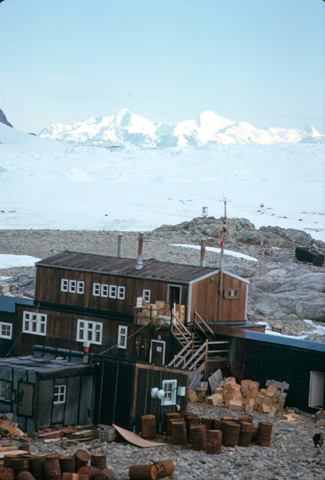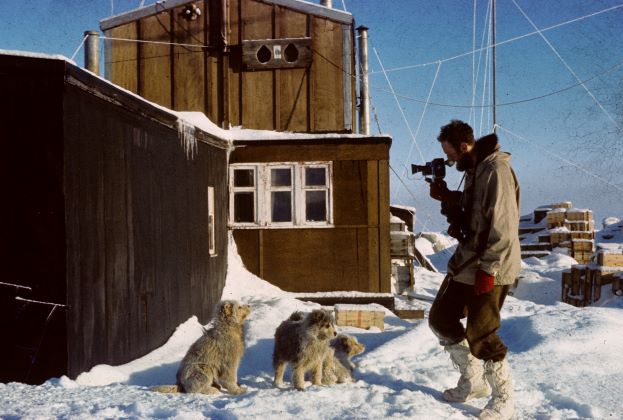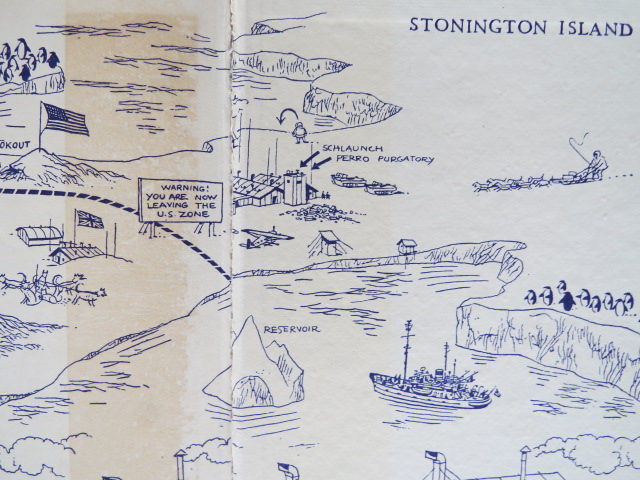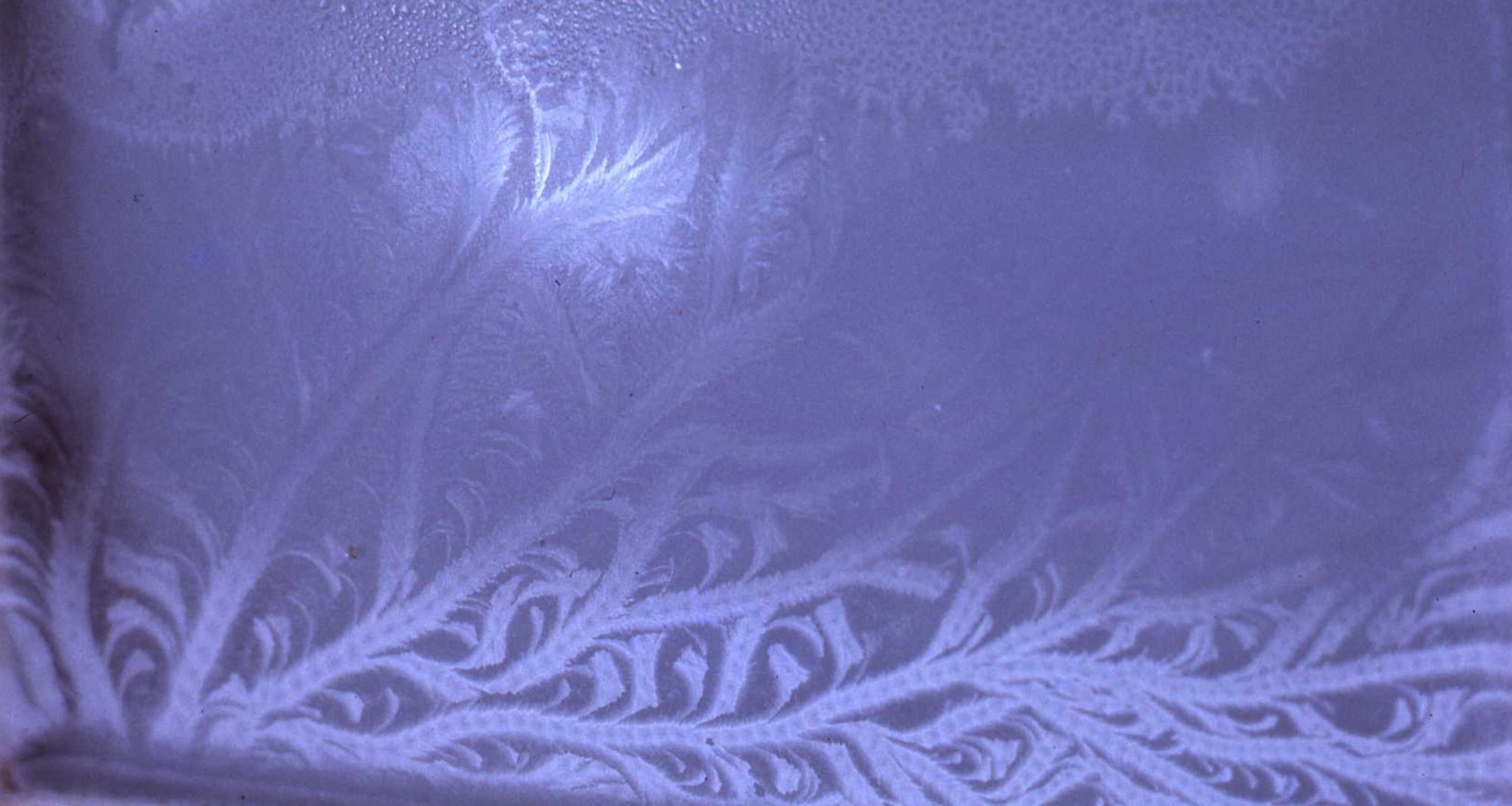More Interesting Stuff about the USASE – Terry Tallis & Neil Marsden

In adding more facts about USASE at Stonington, Terry Tallis and Neil Marsden brought up their photos of the Two-Holer Bog Seat, which for some period of time adorned the gable end of the Stonington Hut. At this point, nobody knows (or admits to knowing) how it came to be there, or where it went. Input welcomed.
Neil remembers it being known as ‘Jenny’s Bog Seat’, and the map below is on the inside front cover of Jenny Darlington’s Book: ‘My Antarctic Honeymoon: A Year At The Bottom of the World..” It is presumed that the mounted seat was a remnant from USASE at Stonington, and that the two-seater cludgy was as shown on the edge of the ice cliffs.



More about the USASE and Fids – (see also USASE LINK) – Terry Tallis
1939 – 41 USASE – USNS North Star and USS Bear
Richard Byrd, now a Rear Admiral was tasked with commanding an expedition to set up two long term manned stations in Antarctica. This was a government sponsored response to territorial claims being made by other nations at the time. The ships set up a West Base on the Ross Ice Shelf in January 1940 followed by East Base on Stonington Island on the other side of the continent off the Antarctic Peninsula in March 1940. Each base had aircraft and dog teams for exploring and mapping purposes. The progress of WW2 led to a removal of funding and the expedition was cancelled in 1941 with the Antarctic Service being disbanded.
Harry Darlington (later to become Jennie Darlington’s husband)
At 19, Harry was one of the youngest men to sail on the famous barquentine ‘Bear’, with the United States Antarctic Services Expedition, 1939-41.
In 1940 he spent 137 days dog sledging, 1,087 miles to the West Coast of the peninsular from Stonington East Base.
In 1941, when the expedition returned to the US, Harry was immediately ordered to active duty. Commissioned an ensign, he attended the first Navy fighter and radar school. On graduation he was transferred to the battle ship ‘Texas’.
After Pearl Harbour, a letter of high praise from Admiral Byrd helped him into flight school to become a cadet captain and, finally, a lieutenant piloting Navy bombers. Following a stint of South Atlantic patrol duty he was transferred to England, where, under the 19th Group Coastal Command, he flew combat missions in conjunction with the R.A.F.
1947-1948 – Ronne Antarctic Research Expedition – MV Port of Beaumont
Finn Ronne led a private American Expedition based on Stonington Island on the Antarctic Peninsula to survey both sides of the peninsula from the air and ground. The expedition used the old Stonington Island hut from the 1939-41 United States Antarctic Service Expedition. Ronne’s wife Edith and Jennie Darlington, wife of Harry Darlington the chief pilot, became the first two women to winter in Antarctica. There had never been any intention to bring the women-folk further south than the last port of call in South America, but it hadn’t worked out that way, so that the leader Finn Ronne and the senior pilot, Harry Darlington both had their wives with them when they arrived at Stonington Island after leaving Beaumont Texas in January 1947
There was finally co-operation with a British wintering party on the same island to make surveying trips. The iced-in ship was freed by visiting ice-breakers from Operation Windmill.
Jennie Darlington became pregnant on the US East Base in September 1947, this of course but for the fact that the MV Port of Beaumont was frozen in at Back Bay, Stonington, and attempts to free her in February 1948, with charges of dynamite had failed (suggested by Commander Ronne). This put a different view on the situation.
The FIDS at Base E were due to be relieved by the old John Biscoe, but that looked unlikely unless ice conditions improved. MV Port of Beaumont was not going anywhere and was hardly suitable as a maternity ward. So……USS Edisto and USS Burton Island came to the rescue.
1947-48 – Operation Windmill – United States Navy Second Antarctic Developments Project – USS Edisto and USS Burton Island
A much smaller expedition of two icebreaking ships whose job was to place small onshore parties to take measurements to assist the placing of the 70,000 aerial photographs taken during Operation Highjump. The name “windmill” came from the use of three helicopters in deploying shore parties.
